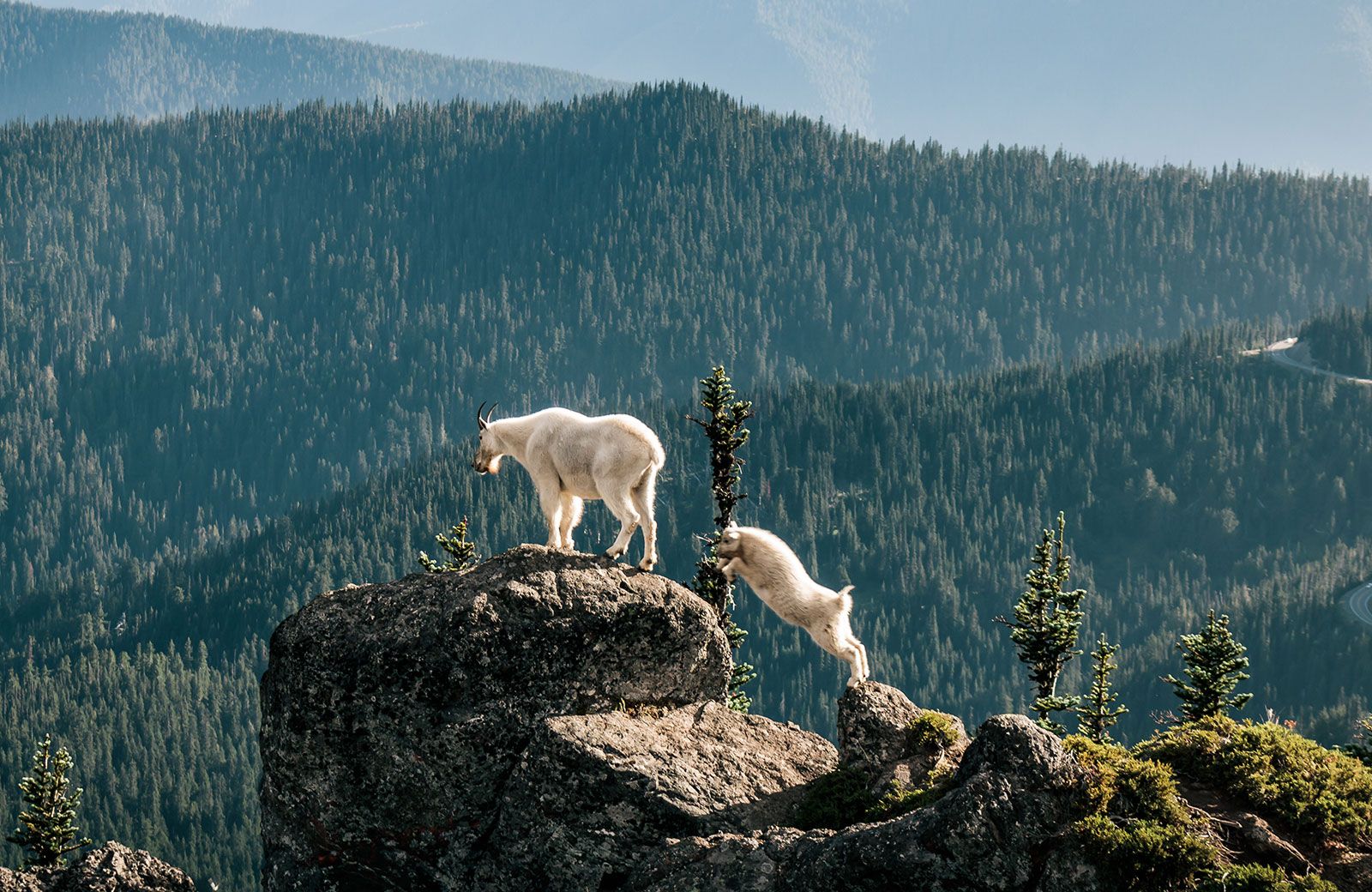The rocky mountain goat, aka the mountain goat, is more than at home among the steep mountainous cliffs. With strong legs and split padded hooves, they navigate effortlessly over the rugged terrain they call home. These goats can be spotted from Alaska all the way down through the rocky mountains, in alpine and sub-alpine environments at elevations of over 13,000 feet! These critters can scale 1,500 feet in around 20 minutes.
They are agile, methodical climbers, adapted to the insecure footing of snow-covered and icy cliffs, where predators are loath to follow. On these cliffs, they readily turn on their pursuers, including humans. Mountain goats belong to the goat antelope tribe, Rupicaprini, of the bovid family. Despite their unusual appearance and behaviour, they are close relatives of sheep and true goats.
The rocky mountain goat facts:
- One interesting fact is that mountain goats are not actually goats at all. They are more closely related to antelope and are a member of the Bovidae (cloven-hoofed) family.
- Like others in their family, they are herbivores (eat plant matter) that consume herbs, grasses, sedges, mosses, lichens, ferns, twigs, and leaves.
- Like cows and a variety of other herbivores, they will engage in rumination, aka – chew their cud (regurgitated plant matter from their stomach). Mmm, tasty.
- Both males and females sport horns that can grow up to 12 inches.
- The meat from a goat is called cabrito or chevon.
- You can count how old a goat is by the rings on its horns.
- Females are called nannies, males are called billies, and their babies are called kids.
- Their primary predators are mountain lions, bobcats, and golden eagles.
- Rocky mountain goats can be very aggressive towards humans. So keep your distance, if you see one in the wild.
- The females birth 1 – 2 kids each spring season.
- After only 1 – 2 days of being born, the young goats are already hopping around rocky ledges with mom.
- Females live in what are called bands or herds with their kids. Males live in smaller groups of 2 – 3.
